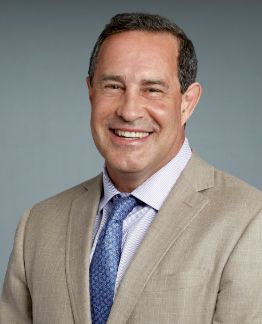Article
Robotic Surgical Approaches Advance Treatment in NSCLC
Author(s):
Robert J. Cerfolio, MD, discusses how the use of surgery has significantly evolved over the years and how advances made in robotic surgery improve quality of life of those who need to undergo these procedures.

Robert J. Cerfolio, MD
The use of robotic surgical systems in general thoracic surgery for the treatment of patients with non—small cell lung cancer (NSCLC) has become increasingly more prominent, said Robert J. Cerfolio, MD.
“With the robot, the incisions are just one-third or one-fourth of 1 inch; it's incredible,” said Cerfolio, director of the Lung Cancer Center, chief of clinical thoracic surgery, NYU Langone’s Perlmutter Cancer Center. “No muscles are cut, and patients spend 1 night in the hospital. I had some people go home the same day of a lobectomy. They don’t get a Foley catheter, and they're back at work sometimes in 1 week.”
Robotic devices used in surgery are known to provide greater dexterity and range of motion to surgeons operating on hard-to-reach parts of the body, and are usually associated with less pain, less blood loss, shorter hospital stays, and shorter recovery times. Because of all of these benefits, Cerfolio predicts that many fields will be turning toward the use of robotics in the future.
OncLive®: How has surgery evolved over the years?
In an interview during the 2018 OncLive® State of the Science Summit™ on Advanced Non—Small Cell Lung Cancer, Cerfolio discussed how the use of surgery has significantly evolved over the years and how advances made in robotic surgery improve quality of life of those who need to undergo these procedures.Cerfolio: It is completely different. When I trained, we were doing [big] thoracotomies—cutting 1 muscle at least, sometimes 2—and putting great big steel retractors and spreading the ribs. I did 9000 of [these procedures]. I haven't done one of those in almost 4 years because we are so good with little incisions with either robot- or video-assisted thoracoscopic surgery (VATS).
Do all of these advances made in lung cancer treatment affect the role of surgery at all? Is it done more often or less now?
Are there any unanswered questions in this space?
What is the biggest unmet need that remains in advanced lung cancer?
Is the use of surgery in other fields are heading in this direction as well?
I do mostly robotic operations, although today I did a VATS. The point is, [with these approaches, you only make] tiny little incisions. I have had a few patients return to work in just 1 week. A few athletes have gone back to work at 10 days. It's unbelievable—a completely different ballgame. The risks [for surgery] went from 1% to less than .1%. It's a completely different world.Just because you could do something better doesn't mean you should change the indication when you have to do it. That was maybe true 10 years ago, but I don't think it's true now. Let's hope not. No, the indication for surgery remains the same; in fact, our benign resection rate has gone way down. The rate is approximately 5% now, but it used to be about 10% to 12%. Therefore, no, we're being even more selective with surgery because we're able to diagnose these [conditions] in a minimally invasively way even better now.There are 1 billion unanswered questions with cancer and we're just scratching the surface. We know [a small percentage] of what we need to know regarding how cancer works, and every day we're finding different receptors on cancer cells and other cells and shields. [For example,] PD-L1 protects normal cells and also is on cancer cells, and [we’re learning more about] how it can get into these cells. We're just scratching the surface of that. But for surgery, the ability to do things minimally invasively is going to change the entire “ballgame.” Going down through the mouth or through the nose and treating [patients with] lung cancer that way [will be next].People are still dying from systemic disease, even though we've gotten better with [the development of] immunotherapy and [targeted] agents that are specific to certain actionable mutations. When there's a mutation on a cancer cell, we can nail it, we can hit it, and we can be specific; it's exciting. But still, too many of these people [succumb to their disease], so we still have not controlled the rogue metastases.Absolutely. It is robotic, but [incisions will get] smaller and smaller, until we'll be doing natural orifice [endoscopic] surgery and not making incisions in the chest, making 1 incision instead of 4, or going down through the mouth and treating it with a catheter, which is coming incredibly soon.







